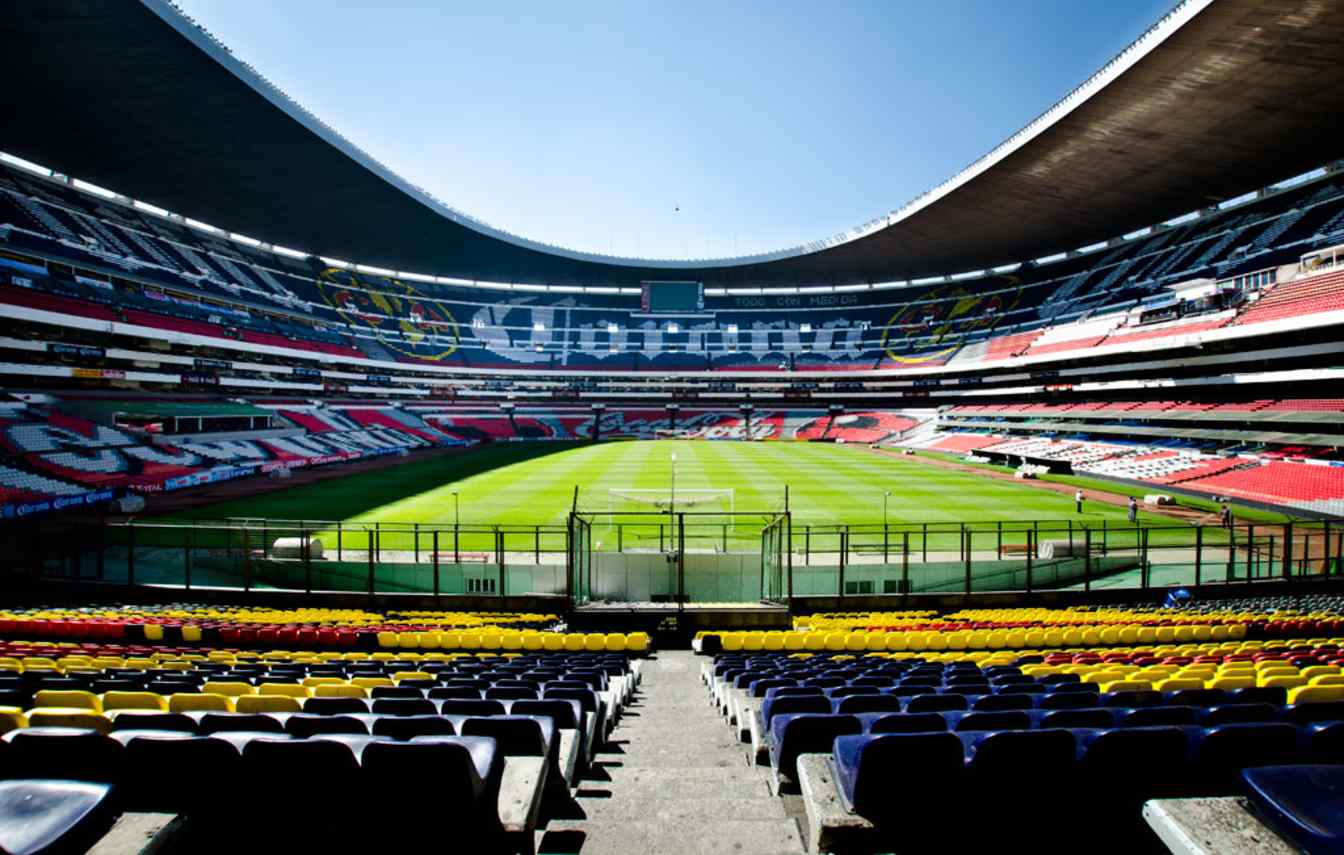Mexico: Mexico begins major redevelopment around Estadio Azteca ahead of 2026 World Cup
source: StadiumDB.com; author: Jakub Ducki
 Intensive renovation works have begun around the legendary Estadio Azteca. Under the supervision of Clara Brugada, a large-scale urban program called “Play Fair, Walk Fair” has been launched to modernize infrastructure in the southern part of the metropolis.
Intensive renovation works have begun around the legendary Estadio Azteca. Under the supervision of Clara Brugada, a large-scale urban program called “Play Fair, Walk Fair” has been launched to modernize infrastructure in the southern part of the metropolis.
Advertisement
Modernization under Clara Brugada’s leadership
On Wednesday, October 29, Mexico City’s mayor, Clara Brugada, officially inaugurated renovation works around Estadio Azteca, located on the border between Coyoacán and Tlalpan districts. These works form part of the Juega Limpio, Paso Limpio
(Play Fair, Walk Fair
) program, aiming to upgrade key urban infrastructure ahead of the 2026 FIFA World Cup.
The ceremony was attended by Raúl Basulto Luviano, Secretary of Public Works and Services, local mayor Giovani Gutiérrez, and Félix Aguirre, general director of Ciudad de México Stadium. As emphasized during the event, the project also aims to guarantee residents’ basic rights — access to water, sewage systems, clean public spaces, and efficient transportation.
From CETRAM Huipulco to Estadio Azteca Bridge
According to the Secretariat of Works and Services (SOBSE), modernization will cover the CETRAM Huipulco transit hub, spanning over 16,000 square meters. The plan includes resurfacing roads, rebuilding sidewalks, pedestrian crossings, and bridges. New lighting and signage will also be installed to improve pedestrian and driver safety.
The project also envisions a new market with a bicycle parking area for local vendors and users of the nearby bike path. This route will connect Calzada de Tlalpan with other parts of the city, creating a modern transport axis.
One of the key elements of the program will be the renovation of the Circuito Estadio Azteca road bridge. The plan includes resurfacing, widening sidewalks by 950 square meters, upgrading lighting, and reinforcing the structure. Additionally, 5,600 square meters of the Tlalpan bridge surface and nearly 1,000 square meters of sidewalks will be refurbished.
Preparing for World Cup — impression for millions
Estadio Azteca, currently operating under the name Estadio Banorte and set to be officially renamed Stadium Mexico 2026
during the World Cup, will be one of three venues hosting matches in Mexico, alongside Monterrey and Guadalajara.
Authorities emphasize that the investment is not only meant to meet FIFA’s standards but also to make a strong impression on fans visiting from all over the world.
The Juega Limpio, Paso Limpio
program covers not only road and sidewalk modernization but also improvements to public transport. The city announced upgrades to the urban train, soon to be renamed Tren El Ajolote.
The project plans to double the number of trains and increase capacity between Taxqueña and Xochimilco.
Deadlines and challenges before 2026
According to the city’s schedule, works around Estadio Azteca are expected to be completed in the first quarter of 2026. Renovation of the stadium itself, which began earlier, is planned to finish by March 2026, just before the tournament begins.
However, recent reports indicate potential delays in the renovation of stands and VIP areas. Mexican media suggest some works may extend beyond initial deadlines. Still, authorities assure that Coloso de Santa Úrsula will be completed on time and fully compliant with FIFA standards.
Changes across the entire city
Estadio Azteca area redevelopment is just one of more than 30 infrastructure projects linked to World Cup preparations. City officials also plan to upgrade roads, public transport, and urban spaces in other districts.
Plans include modernization of Metro Line 2, which will gain a better connection to the city train ending near the stadium. New bike paths are also being built, the most significant of which — along Avenida Tlalpan — will link the city’s southern areas with the historic center and Zócalo Square.
Advertisement
 StadiumDB
StadiumDB
